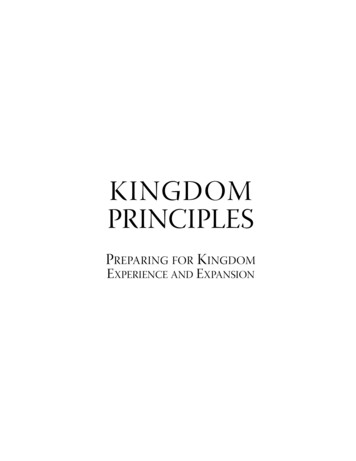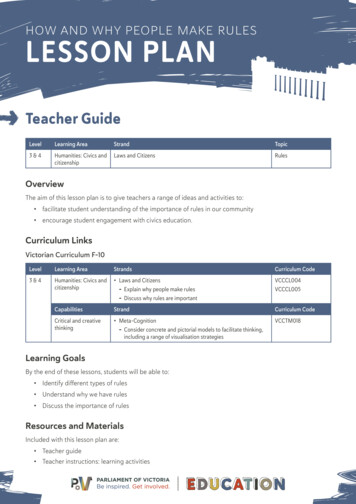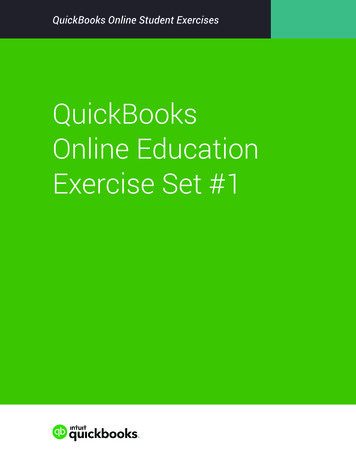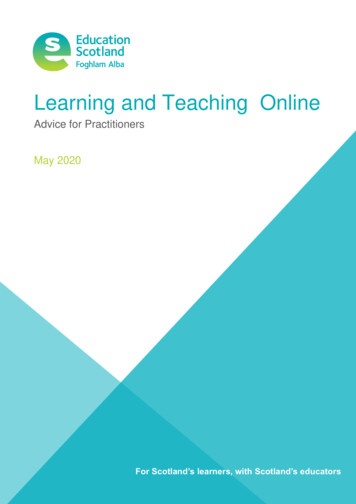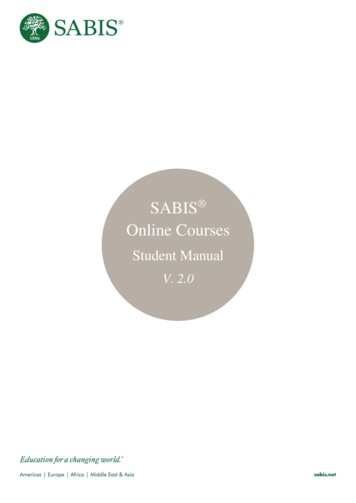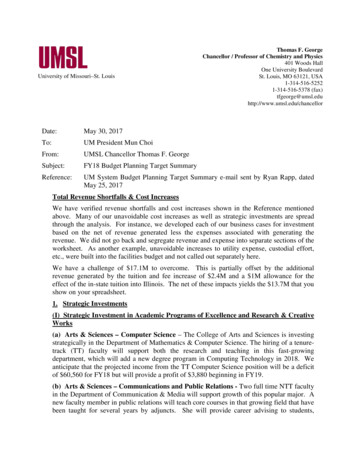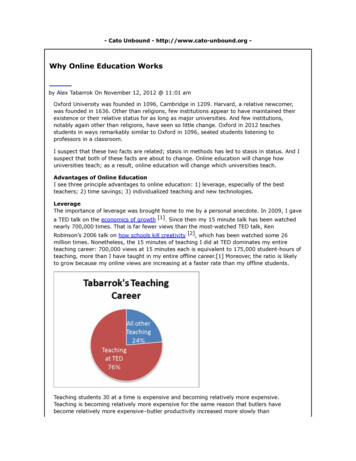
Transcription
- Cato Unbound - http://www.cato-unbound.org -Why Online Education Worksby Alex Tabarrok On November 12, 2012 @ 11:01 amOxford University was founded in 1096, Cambridge in 1209. Harvard, a relative newcomer,was founded in 1636. Other than religions, few institutions appear to have maintained theirexistence or their relative status for as long as major universities. And few institutions,notably again other than religions, have seen so little change. Oxford in 2012 teachesstudents in ways remarkably similar to Oxford in 1096, seated students listening toprofessors in a classroom.I suspect that these two facts are related; stasis in methods has led to stasis in status. And Isuspect that both of these facts are about to change. Online education will change howuniversities teach; as a result, online education will change which universities teach.Advantages of Online EducationI see three principle advantages to online education: 1) leverage, especially of the bestteachers; 2) time savings; 3) individualized teaching and new technologies.LeverageThe importance of leverage was brought home to me by a personal anecdote. In 2009, I gavea TED talk on the economics of growth [1]. Since then my 15 minute talk has been watchednearly 700,000 times. That is far fewer views than the most-watched TED talk, KenRobinson’s 2006 talk on how schools kill creativity [2], which has been watched some 26million times. Nonetheless, the 15 minutes of teaching I did at TED dominates my entireteaching career: 700,000 views at 15 minutes each is equivalent to 175,000 student-hours ofteaching, more than I have taught in my entire offline career.[1] Moreover, the ratio is likelyto grow because my online views are increasing at a faster rate than my offline students.Teaching students 30 at a time is expensive and becoming relatively more expensive.Teaching is becoming relatively more expensive for the same reason that butlers havebecome relatively more expensive–butler productivity increased more slowly than
productivity in other fields, so wages for butlers rose even as their output stagnated; as aresult, the opportunity cost of butlers increased. The productivity of teaching, measured in,say, kilobytes transmitted from teacher to student per unit of time, hasn’t increased much. Asa result, the opportunity cost of teaching has increased, an example of what's known asBaumol’s cost disease. Teaching has remained economic only because the value of eachkilobyte transmitted has increased due to discoveries in (some) other fields. Onlineeducation, however, dramatically increases the productivity of teaching. As my experiencewith TED indicates, it’s now possible for a single professor to teach more students in anafternoon than was previously possible in a lifetime.The counter-argument is that there is an ineffable quality of the classroom experience thatraises its value well above the same material taught online. Even after many years ofteaching, however, what exactly this quality might be remains ineffable to me. Actually, thatis not quite fair. Bringing the most advanced students in any field up to the cutting edge ofknowledge and beyond has always required a kind of apprenticeship rather than a morestraightforward communication of data/knowledge. Fields with greater physicality, not justsports and dance, but also experimental biology, physics, and chemistry will also requiremore in-classroom teaching with greater attention from a human being. Even recognizingthese exceptions, however, still leaves the vast majority of teaching open to massiveproductivity increases. Until late college, physics is mostly teaching knowledge known sinceNewton. Most of the mathematics known or needed by most people has not advanced muchbeyond Euclid and Pythagoras, let alone Euler. No one expects online education to substitutefor apprenticing to a master, but much education at the college level is already masseducation taught not by a master but by an adjunct.For the sake of argument, however, let us accept that classroom teaching has some specialvalue. We must still weigh this value against the productivity increases (and thus the costdecreases) potentially available from online education. The majority of my teaching comesfrom my 15 minute TED talk, but the vast majority of the cost comes from the minority ofoffline teaching. The 700,000 viewers of my TED talk were charged nothing, but the farsmaller group of people who have taken my offline classes were charged, along with thetaxpayers, upwards of a million dollars.[2] With these cost ratios, one imagines that manystudents would appreciate the option of a lower-cost product even if quality were somewhatlower. Quality, however, need not be lower with online education. Quality can increase byincreasing the number of students taught by the best teachers and by substituting substantialcapital for labor in teaching.The best way to increase the quality of teaching is to increase the number of students taughtby the best teachers. Online education leverages the power of the best teachers, allowingthem to teach many more students. Moreover, online education means that we also see thebest at their best. I won’t comment on my teaching quality but what I can say without fear ofdispute is that the 15 minutes of teaching in my TED talk was among the best 15 minutes ofmy career. Knowing the potential size of the TED audience, I honed my talk and visuals withmonths of practice. I’d rather be judged by my best 15 minutes than by my average 15minutes. My offline students get my average 15 minutes; my online students get my best 15minutes.Teaching today is like a stage play. A play can be seen by at most a few hundred people at asingle sitting and it takes as much labor to produce the 100th viewing as it does to producethe first. As a result, plays are expensive. Online education makes teaching more like amovie. Movies can be seen by millions and the cost per viewer declines with more viewers.Now consider quality. The average movie actor is a better actor than the average stage actor.If you were making a movie with a potential audience in the millions wouldn’t you hire thebest actors? With more viewers it also makes sense to substitute capital for labor, addingspecial effects, scenery, music and other quality improvements resulting in a movieexperience unlike any that can be created on stage. Is there something ineffably great about
a live performance? Occasionally, but the greatest stage performances are seen by only ahandful of people.The parallel between movies and plays and online and offline education has further lessons.First, the market for teachers will become more like the market for actors, a winner-take-allmarket with greater inequality and very big payments at the top. A principal player onBroadway might earn 62,500 a year, perhaps twice what a minor player might earn.[3] Oneof the biggest stars in the world, Julia Roberts, made 35,000 a week, or 1.62 million in a50-week year performing in Three Days of Rain. Nevertheless, her stage salary pales incomparison to her typical payment of 10– 20 million per movie for much less work. Biggermarkets support larger salaries, so the best teachers will earn much more in an online world.Second, movies are better in many respects than plays, but no one doubts that a taped playis worse in all respects than a live play. Many of the early online forays into education weresimply taped lectures, boring, flat, and worse than the same in-class lecture. To take fulladvantage of the online format, an online lecture has to be different from an in-class lecture.Different mediums demand different messaging. I turn to some of these differences now.Time SavingsTyler Cowen and I have created a new online education platform, MRUniversity.com [3], shortfor Marginal Revolution University, after our blog of that name. In putting together our firstcourse, Development Economics, we were surprised to discover that we could teach a fullcourse in less than half the lecture time of an offline course. A large part of the difference isthat online lectures need not be repetitive.Dale Carnegie’s advice to “tell the audience what you're going to say, say it; then tell themwhat you've said” makes sense for a live audience. If 20% of your students aren’t followingthe lecture, it’s natural to repeat some of the material so that you keep the whole audienceinvolved and following your flow. But if you repeat whenever 20% of the audience doesn’tunderstand something, that means that 80% of the audience hear something twice that theyonly needed to hear once. Highly inefficient.Carnegie’s advice is dead wrong for an online audience. Different medium, differentmessaging. In an online lecture it pays to be concise. Online, the student is in control and canchoose when and what to repeat. The result is a big time-savings as students proceed as fastas their capabilities can take them, repeating only what they need to further their individualunderstanding.We get even more savings by eliminating the fixed time-costs of attending class. Before Ieven begin my lecture, many of my students will have driven half an hour just to attend theclass, followed by another half an hour to get home. And with online lectures there is nolooking for parking! Combining these savings with more concise lectures and we get big timesavings.Time ShiftingAs with a play, offline teaching requires that every customer consumes at the exact momentthat the supplier produces. As with a movie, online education is consumed and producedmore flexibly. In the online world, consumers need not each consume at the same time, andsuppliers need not produce at the moment of consumption.It’s costly to coordinate consumers and suppliers, and the increase in cost reduces theamount of education consumed. I teach a class at George Mason University, 7:20–10 pm onTuesday nights. I suspect that this is not the preferred time to learn for any of my students,and it’s certainly not the preferred time for me to teach; it’s merely the best time tocoordinate me and as many students as possible.The inflexibility of offline teaching also reduces the quality of teaching and of learning.
Despite caffeination, by 9:30 pm fatigue sets in, and my teaching quality begins to fall. I amnot as sharp at 9:30 pm as at 7:30 pm, and neither are my students. As the quality of bothsender and receiver declines, less is communicated. As a result, it makes little sense for meto try to teach complex ideas after 9:30 pm. I try to structure my class to accommodate, butsometimes it’s not possible and I end up either teaching less or teaching less well.Supermarkets are open 24 hours a day, why shouldn’t universities be? In fact, MarginalRevolution University [3] is open 24 hours a day, 7 days a week, 365 days a year. Learning ondemand. Flexible time scheduling reduces the costs of coordination and also allows studentsto optimize learning effectiveness by choosing the best time for learning.Online education can also break the artificial lecture length of 50–90 minutes. Many teachingexperts say that adult attention span is 10–15 minutes in a lecture, with many suggestingthat attention span has declined in the Internet era.[4] A good professor can refocus theattention of motivated students over longer periods. Nevertheless, it is clear that thestandard lecture length has not been determined by optimal learning time but by the highfixed costs of traveling to school. Lower the fixed costs and lectures will evolve to a morenatural level, probably between 5–20 minutes of length—perhaps not coincidentally thenatural length of a lecture is probably not that different from the length of a typical popularmusic track or television segment.Individualized Teaching and New TechnologiesA common objection to online education is that the classroom experience provides greateropportunity for personalized learning. In some cases this is true, but the offline experience isoften not a classroom of 4-9 students, but a classroom of over 100. At Virginia Tech, classesof 100-plus students are not uncommon, and one freshman course in geography has some2,700 students.[5] Virginia Tech is not unusual.Virginia Tech. From atorshear-advice-how-teach-large-courses [4].The conventional wisdom is that the classroom allows for more questions. The truth, however,is that the online space is a better place both for asking questions and for interacting with
professors and other students. Put aside that students from all over the world can askquestions online. The problem is that a classroom lecture is constrained by the costs ofcoordination to begin and end at a time fixed in advance. If every student in a class of 50asked one question per lecture there would be no time for the lecture. In contrast, questionscan be asked at any time in an online lecture, and they do not impede the lecture. Moreover,in the online world there are more resources to answer questions. Answers to last year’squestions, for example, can be used to answer this year’s questions. More importantly, theonline world makes it easier for peer-learning, for students to answer their own questions. AtMRUniversity we have provided tools such as voting on questions and answers that we hopewill allow for more peer-learning and peer-teaching. Hence our motto: Learn, Teach andShare.Questions are also more powerful in the online world. Consider how much difference is madeby the simple possibility of review. Review means that the teacher is held to a higherstandard. If I make an error in my offline class, chances are no one will catch it. If I make anerror in an online class, a student will invariably catch it. (Knowing this I am more careful inmy online class.)Technology is rapidly changing how much interaction can occur online. The future is lecturesplus intelligent, on the fly assessment. The GRE, for example, is a computer-adaptivetest—when you answer questions correctly you get a harder question; when you answerincorrectly you get an easier question. The adaptive nature of the test makes it possible tozero in more quickly on true ability. The future of online education is adaptive assessment,not for testing, but for learning. Incorrect answers are not random but betray specificassumptions and patterns of thought. Analysis of answers, therefore, can be used to guidestudents to exactly that lecture that needs to be reviewed and understood to achieve masteryof the material. Computer-adaptive testing will thus become computer-adaptive learning.Computer-adaptive learning will be as if every student has their own professor ondemand—much more personalized than one professor teaching 500 students or even 50students. In his novel Diamond Age, science fiction author Neal Stephenson describes aYoung Lady’s Illustrated Primer, an interactive book that can answer a learner’s questionswith specific information and also teach young children with allegories tuned to the child’senvironment and experience. In short, something like an iPad combining Siri, Watson, andthe gaming technology behind an online world like Skyrim. Surprisingly, the computer willmake learning less standardized and robotic.In Diamond Age, the very first Illustrated Primer is created by a billionaire for use by his ownchild, but within a decade only slightly less functional devices are made available to millions.Online education has the potential to break the cost disease by substituting capital for laborand hitching productivity improvements in education to productivity improvements insoftware, artificial intelligence, and computing.Productivity in education has lagged productivity in other sectors of the economy becauseteaching is so labor intensive. Where exactly in the typical classroom is there room forinvestment, let alone productivity improvement? More chalk? Prior to online education, thebottleneck though which productivity improvements had to pass was the teacher, and weknow that improving teacher productivity is very difficult, which is why teaching methodshaven’t changed in millennia. Online education vastly increases the potential for productivityincreases because it greatly increases the size of the potential market. Bigger marketsincrease the incentive to research and develop new products (coincidentally the very topic ofmy TED talk [5].) A tool used to improve online education–an interface, an algorithm, a newteaching method–can be applied very widely, potentially world-wide, thus greatly increasingthe incentive to invest in the education sector, perhaps the most important sector of the 21stcentury economy.
Educational productivity will also increase with online education because online education isinherently data-rich. Every video watched, every link clicked, every question answered or notanswered, all can easily be collected and analyzed. Randomized controlled trials, which arevery expensive in the offline world, become very cheap in the online world. Consider twomethods of teaching a concept. Which works best? In the offline world, a randomizedcontrolled trial might involve 50 students. In the online world, we can randomly assign one oftwo videos to thousands of students and then monitor their performance days or weeks lateron exams or other material. Online education will allow us to learn about what works muchmore quickly than in the past.Online education will also dramatically shorten the time from learning what works toimplementing what works. Once again, scale and leverage are key. In the online world, thebest teachers will teach more students, but that leverage also means that better teachingmethods can diffuse through fewer teachers to more students much more rapidly. In thelimit, educational improvements will occur with a download in the same way that my DVRplayer periodically updates its operating software.The College ExperienceThe college experience is about much more than learning. Online education will not replacethe two Olympic-sized swimming pools at my university, the modern exercise facilities, thecoffee shop, or the restaurants. At many institutions, online education will not replace butinstead will supplement and complement the traditional college experience. “Flipping theclassroom"—viewing online lectures at home and doing “homework” in-class—is oneapproach. More generally, many institutions will be able to raise the quality and breadth ofthe classes that they offer. Not every university can afford world-class lecturers indevelopment economics, the history of Croatia, or pop art, but more universities will be ableto offer such courses by supplementing their own lecturers with online offerings.The university will continue to be a place for young people to socialize and mate, but whenthe shroud of education is lifted, the socialization and education functions will become moredistinct. As socialization and education are unbundled, parents and taxpayers may decide thatthey would rather not pay for four five years of socialization when cheaper means ofeducation are available.It’s important to understand that already today the “college experience” is experienced byonly a minority of students. Say “college student” and the image may be of a young personjust out of high school living in a dorm pursuing a four year degree with few financialconstraints. The reality is that more than a third of college students are over the age of 25,nearly half are enrolled part-time, and most are working. About one quarter of collegestudents have children of their own! The traditional college experience does not meet theneeds of most of today’s students.[6]Online Education Has Already Met the Market TestOnline education hit the radar of the educational elite only recently with the unexpectedsuccess of Stanford’s free online course on artificial intelligence. Taught by Peter Norvig andSebastian Thrun in 2011, this course enrolled more students than the entire Stanford studentbody. Educational startups like Coursera, Udacity and, of course, MRUniversity promoted theidea of MOOCs, massive online open courses. The elites, however, have been behind thecurve. In 2011, even before the rise of MOOCs, there were 2.75 million online students, 12%of the headcount at degree-granting schools. [7]Private, for-profit universities such as the University of Phoenix and Ashford University werethe pioneers of online education. The for-profits offered courses that appealed to women,particularly those with children, to ethnic minorities and to adults 25–44 years old who valuedall of the flexibility and time-savings that online education offered. Online education has also
been especially successful in the graduate market, particularly for the Master’s degree, whichis shorter and pursued by adults less interested in the socializing and mating functions of thetraditional college—indeed, today the Master’s degree is already more than 30% online.[8]By selling (and marketing) to an audience that traditional universities had mostly ignored, thefor-profits increased market share tremendously in the 2000s. Questions about quality andlarge subsidies from taxpayer funds have plagued the for-profits, but we should not mistakethe messenger for the message. Online education has already met the market test.Online Education and the Developing WorldThe shift to online education is happening at the same time as the developing world isincreasing education at a dramatic rate. Over the next 15 years or so India plans to increasethe number of students attending university from 12 million to over 30 million [6]; a goal thatwill require at least 1,000 new universities. China has already increased the number ofentering university students from 1 million in 1998 to over 6 million today. Now consider, willthe developing world adopt the Oxford model of 1096 or the newly emerging online model?It’s a good bet that for reasons of scale, speed, and quality the developing world will adoptthe online model.The Great UnbundlingTraditional universities combine course development, delivery, assessment, and credentialing.Online education makes it clear that these categories can be unbundled. Most of the MOOCsare currently offered for free with no credential, but institutions such as Western Governor’sUniversity and Colorado University are beginning to credential courses produced from outsideof their institutions. It’s possible to imagine an education system in which degrees areassembled from many sources and many institutions offer credentials based on various typesof assessment. Already many universities now offer credit for courses taken at otheruniversities, and in some systems, such as Australia’s, simultaneous cross-institutionalenrollment is standard.Unbundling development from the other functions means greater economies of scale.Unbundling assessment offers the possibility of proof of knowledge without taking a class. Wealready have some experience with unbundling credentialing in the market for lawyers wherelaw schools train students who must then pass the bar.ConclusionsTechnology is disrupting the market for education just as it has disrupted the market fornews. We do not yet know how the industry will shake out, but a few points can be madewith confidence. Online education offers tremendous savings both in terms of money and oftime. Online education will also increase the quality of education for many but not all courses,especially as investment in complementary technologies increases. The for-profit universitieshave already moved heavily into online education and the non-profits are poised to follow.What is less clear is who will be delivering the online content of the future, how knowledgewill be assessed, and how learning will be credentialed.We should also not count the old model out. Having never observed an alternative, we maynot yet fully appreciate the old model’s strengths. The Oxford model weathered previoustechnological storms, not the least of which was the printed book. Nevertheless, thedisruption potential is peaking now.Notes[1]I estimate a total of 54,000 student hours of offline teaching. A typical course is 45student hours, at 2 courses per semester, 2 semesters per year with 30 students per courseand 10 years of teaching that is 54,000 student hours.[2] This is not quite accurate; the live TED participants in 2009 were charged a considerableamount to attend TED, which covered the fixed costs of my talk (I was paid nothing) and the
distribution costs. Nevertheless, the relative costs of delivery per student hour are extreme.[3] http://www.ehow.com/info 7941300 broadway-actors-salary-range.html [7].[4] The evidence for these assertions is surprisingly weak. Nevertheless, I am confident thatthe optimal lecture length is not 50–90 minutes. See Wilson, K., & Korn, J.H. (2007)."Attention during lectures: Beyond ten minutes." Teaching of Psychology 34, 85-89 and forone of the better recent studies, Bunce, D. M., Flens, E A., & Neiles, K. Y. (2010). "How longcan students pay attention in class? A study of student attention decline using clickers."Journal of Chemical Education 87, 1438-1443.[5] See Inside Higher Ed, hYQI [8][6] /Nontraditional-Students-Facts2011.pdf [9].[7] Garrett, Richard. Online Higher Education in the United States. Eduventures. Draft, Oct.2012.[8] ibid.Article printed from Cato Unbound: http://www.cato-unbound.orgURL to article: ok/why-onlineeducation-works/URLs in this post:[1] economics of growth: http://www.ted.com/talks/alex tabarrok foresees economic growth.html[2] how schools kill creativity: http://www.ted.com/talks/ken robinson says schools kill creativity.html[3] MRUniversity.com: http://mruniversity.com/[4] ators-hear-advice-how-teach-largecourses: ators-hear-advicehow-teach-large-courses[5] TED talk: http://www.cato-unbound.org http://www.ted.com/talks/alex tabarrok foresees economic growth.html[6] India plans to increase the number of students attending university from 12 million to over30 million: http://www.cato-unbound.org http://www.bbc.co.uk/news/business12597815[7] http://www.ehow.com/info 7941300 unbound.org http://www.ehow.com/info 7941300 broadwayactors-salary-range.html[8] hYQI: ZhYQI[9] ional-Students-Facts2011.pdfCopyright 2012 Cato Unbound. All rights reserved.
a TED talk on the economics of growth [1]. Since then my 15 minute talk has been watched nearly 700,000 times. That is far fewer views than the most-watched TED talk, Ken Robinson’s 2006 talk on how schools kill creativity [2], which has been watched some 26 million times. Nonetheless, the 15 minutes of t
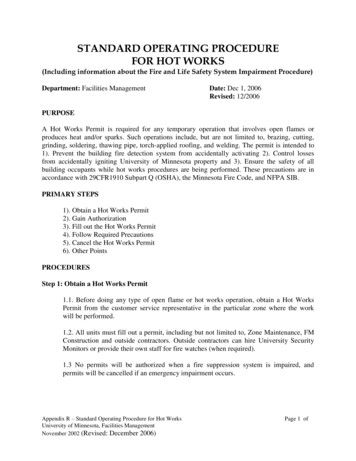
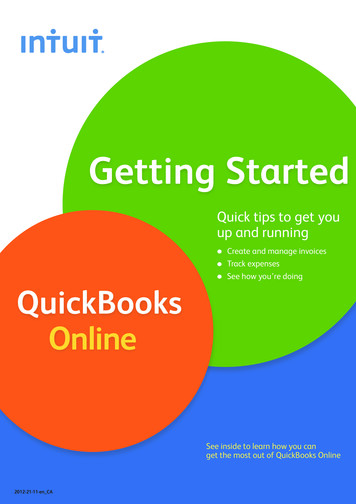

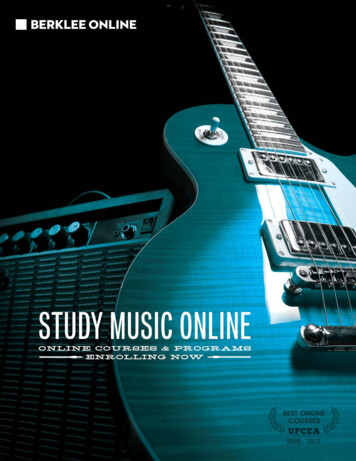
![[Page 1 – front cover] [Show cover CLEAN GET- AWAY 978-1 .](/img/13/9781984892973-6648.jpg)

